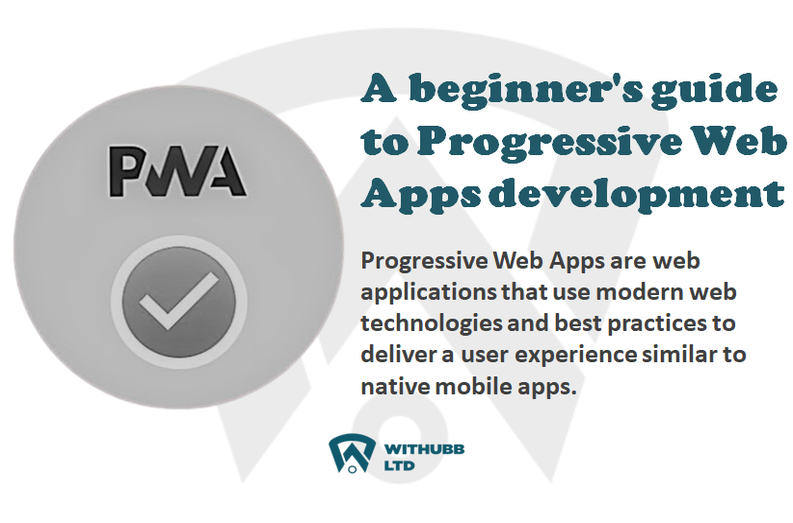Remote vs. Non-Remote Jobs: Which is Best for You?

The concept of Remote and Non-Remote Workplaces have evolved tremendously over the past decade. Traditionally, non-remote jobs dominated the workforce. People commuted to physical offices, worked standard hours, and followed strict schedules under the supervision of managers. However, with the rise of social media and other digital options and the introduction of advanced communication tools, remote work started gaining popularity, allowing employees to work from any location. Many companies have quickly adapted to remote working models to keep their businesses afloat.
Now, the choice between remote and non-remote jobs has become a key decision for both employees and employers. For individuals, understanding the trade-offs can help in making an informed career choice that aligns with their personal and professional aspirations.
What Are Remote and Non-Remote Jobs?
To fully grasp the comparison between remote and non-remote jobs, it's important to first understand the defining characteristics of each. The terms "remote" and "non-remote" refer to the location and flexibility of the work arrangement, which significantly affects how individuals experience their jobs.
Remote Jobs: Work from Anywhere
Remote jobs are roles that allow employees to work outside of a traditional office environment. In this arrangement, individuals can work from virtually anywhere, as long as they have a stable internet connection and access to the tools required for their job. This could mean working from home, a co-working space, a café, or even while traveling to different countries.
Remote work, often called telecommuting or teleworking, emphasizes flexibility in location and often, in working hours as well. These jobs typically rely heavily on digital tools like video conferencing, instant messaging, project management software, and cloud-based services to keep employees connected and productive.
The rise of remote jobs was fueled by advancements in technology that enabled people to stay connected and productive without the need to be physically present in an office. While remote jobs were once limited to certain industries, today, they are found in many fields, including technology, writing, customer service, marketing, and even education.
Non-Remote Jobs: The Traditional Office Environment
Non-remote jobs, on the other hand, are the more traditional forms of employment where employees are required to work from a designated physical location, usually the company’s office or another work site. These roles often follow a set schedule, like the typical 9-to-5, and involve daily commuting.
In a non-remote job, employees are expected to be physically present to complete their tasks, participate in meetings, collaborate with coworkers, and engage with the company culture. Industries like healthcare, retail, manufacturing, and hospitality are prime examples where non-remote work is the standard due to the nature of the tasks involved, which cannot be done remotely.
Non-remote jobs tend to emphasize in-person collaboration, immediate access to resources, and stronger connections to the company environment. This format has long been the standard across many industries but has seen shifts in recent years as more employers experiment with hybrid and remote models.
Advantages of Remote Jobs
Remote jobs offer several benefits, many of which appeal to those looking for flexibility and independence in their work. Below are some of the main reasons remote work might be the right choice for you.
Flexibility in Schedule and Location
One of the biggest selling points of remote jobs is the flexibility they offer. Employees working remotely can choose where they work and often have more control over their working hours. Whether you prefer to work from home, a café, or another country, remote work provides the freedom to structure your environment in ways that enhance productivity and comfort.
Additionally, without the constraints of a traditional office setting, remote workers often have more say in organizing their schedules. While some roles may still require adherence to certain time frames, many remote jobs allow individuals to work during the hours they are most productive, creating a more balanced work-life dynamic.
Elimination of Commuting
The daily commute is a common source of stress for many non-remote workers. Commuting can drain time, energy, and money, especially in congested cities where hours are spent in traffic or on crowded public transport. Remote jobs eliminate this burden, allowing individuals to start their workday without the hassle of getting to an office. This can lead to more time for personal activities, reduced transportation costs, and an overall improved sense of well-being.
Improved Work-Life Balance
Remote work can provide a better work-life balance, particularly for those who have personal or family responsibilities. The ability to work from home allows individuals to spend more time with their families, manage household duties, and even pursue personal hobbies or side projects. Many remote workers find that this flexibility enhances their overall quality of life, as it reduces the stress associated with trying to juggle professional and personal obligations within rigid work hours.
Increased Opportunities for Global Employment
Working remotely opens up the job market on a global scale. Without geographical restrictions, professionals can apply for positions anywhere in the world. This expansion of possibilities is particularly beneficial for those who live in regions with fewer employment opportunities or wish to work for international companies without relocating. It also allows companies to tap into a wider talent pool, creating diverse and innovative work environments.
Challenges of Remote Jobs
While remote work offers many advantages, it also presents some challenges that must be considered before deciding if it's the right fit.
Potential for Isolation
One of the most commonly cited downsides of remote work is the potential for isolation. Working from home or a remote location can limit face-to-face interactions with colleagues, leading to feelings of loneliness or detachment from the company culture. Without the casual interactions of an office setting, remote workers may miss out on networking opportunities or the camaraderie that can come with working in a team environment.
Difficulty in Maintaining Work Boundaries
For some, the flexibility of remote work can be a double-edged sword. Without clear boundaries between work and home life, it can be difficult to “clock out” mentally at the end of the day. This blurring of lines can lead to longer working hours, burnout, and difficulty maintaining a healthy work-life balance. Remote workers must be disciplined in creating and adhering to a structured routine to avoid overworking.
Communication and Collaboration Challenges
Although technology has made it easier to communicate with colleagues remotely, there are still challenges in maintaining effective collaboration. Miscommunication can arise due to time zone differences, the lack of non-verbal cues, or the limitations of digital communication tools. Team members may also feel disconnected from the company’s vision or from important discussions taking place in non-remote settings. These factors can sometimes hinder the seamless execution of tasks, especially in roles that rely heavily on team collaboration.
Advantages of Non-Remote Jobs
Non-remote jobs, or traditional in-office roles, continue to offer various benefits that make them attractive to many professionals. For individuals who thrive on in-person interactions and structured work environments, non-remote jobs might be the ideal choice.
Enhanced Collaboration and Networking Opportunities
One of the key advantages of working in an office setting is the ability to collaborate more effectively with colleagues. The physical presence of team members fosters spontaneous discussions, brainstorming sessions, and direct problem-solving, which can sometimes be less efficient in a remote setting. For professionals in industries that depend on teamwork or client interaction, the proximity of colleagues in non-remote jobs can streamline workflows and enhance productivity.
Additionally, non-remote jobs allow for better networking opportunities. Being in the office provides more chances for employees to build relationships with peers, managers, and clients, which can be valuable for career growth and mentorship opportunities.
Clear Separation of Work and Personal Life
For many individuals, the separation of the workplace from home offers a healthier distinction between professional and personal life. Going to an office creates a routine that defines the start and end of the workday, reducing the temptation to overwork or blur boundaries. This structure can prevent burnout, as the transition between work and leisure is more distinct.
Immediate Access to Resources and Support
In an office setting, employees often have immediate access to resources such as equipment, technical support, and management. If an issue arises, whether it’s a technical problem or a project-related concern, help is typically just a few steps away. This can lead to quicker resolutions and less downtime compared to remote roles, where workers may need to troubleshoot problems on their own or wait for virtual assistance.
Greater Connection to Company Culture
Working in a non-remote role often provides a stronger sense of connection to the company’s culture. Office-based employees are more immersed in the daily rhythms and values of the organization, through events, meetings, and even casual interactions. This environment helps reinforce a sense of belonging and loyalty, which can enhance motivation and job satisfaction.
Challenges of Non-Remote Jobs
Despite their benefits, non-remote jobs also come with drawbacks, particularly for individuals seeking more flexibility in their careers.
Limited Flexibility and Autonomy
Non-remote jobs typically require employees to adhere to specific working hours and locations, which can be restrictive for those who value autonomy. The rigidity of a 9-to-5 schedule might not align with everyone’s preferred work style, and the need to be physically present in an office can limit the freedom to manage personal responsibilities.
The Stress of Commuting
For many, the daily commute to and from work is one of the most stressful aspects of non-remote jobs. Depending on location, commuting can take several hours out of the day, adding additional strain and reducing the amount of time available for family, hobbies, or rest. The cost of commuting, whether it’s for fuel, public transportation, or parking, can also add up over time, making it a significant financial burden.
Risk of Burnout Due to Office Pressures
In non-remote jobs, the social dynamics and pressures of an office environment can sometimes lead to increased stress. Employees may feel the need to conform to certain workplace expectations, such as working long hours or constantly engaging in office politics. This environment can contribute to burnout, especially if the company culture promotes overworking or lacks strong support systems for employees.
Which Is Best for You?
Deciding between remote and non-remote jobs depends on a range of factors, from personal preferences to the nature of the industry you work in. Some people thrive in the structure and social aspects of an office setting, while others prefer the flexibility and independence that remote work provides.
Consider Your Work Style
Ask yourself: Do you prefer structure, or do you work better with autonomy? Remote jobs are often better suited for individuals who are self-motivated and can manage their time effectively without constant supervision. If you thrive in environments where you set your own pace, remote work could offer the freedom you need. Conversely, if you enjoy collaboration, face-to-face interactions, and thrive in structured environments, non-remote jobs may be a better fit.
Think About Your Career Goals
Some industries and career paths are more conducive to remote work than others. For example, tech, writing, and design roles often have more remote opportunities, whereas industries like healthcare, manufacturing, and hospitality typically require a physical presence. Understanding the demands of your field and how they align with your career goals is crucial when making your decision.
Evaluate Your Lifestyle
Lifestyle factors such as family responsibilities, travel preferences, and the importance of work-life balance should also be considered. Remote jobs offer greater flexibility in balancing professional and personal responsibilities, but they require a high level of discipline. On the other hand, non-remote jobs provide clearer boundaries between work and home life, but they may limit the time available for personal pursuits.
Conclusion
The choice between remote and non-remote jobs ultimately comes down to individual preferences, career aspirations, and lifestyle needs. There is no one-size-fits-all answer to which is better—it’s about finding what works best for you. Both types of jobs have their own set of advantages and challenges, and the best choice will depend on your unique circumstances. Remote jobs offer flexibility, global opportunities, and the comfort of working from anywhere, but they also come with potential isolation and blurred boundaries. Non-remote jobs provide structure, collaboration, and a clear separation between work and home, but they may lack the flexibility some individuals desire.
Ultimately, it’s about aligning your work environment with your personal values, work style, and career goals. Whether you prioritize flexibility or the camaraderie of an office setting, carefully weighing these factors will help you determine which option best suits your professional and personal needs.
Want to Build Something Amazing?
We prioritize your business success and we deliver faster. Our services are custom and build for scale.
Start nowMore Articles

How to fix Common Database Design Errors and Improve Performance
1 day, 21 hours ago · 17 min read
Making Money with Domain Names: A Guide to Buying and Selling Premium Domains
1 week, 2 days ago · 10 min read
Why local SEO is Important for your Business Website
1 week, 5 days ago · 10 min read
JavaScript for web development and programming. (Importance, Features, Roles of JavaScript in web development)
1 week, 5 days ago · 8 min read
How to Integrate Payment Gateways into a Website ?
2 weeks, 5 days ago · 11 min read
Object-Oriented Programming (OOP) Meaning, Principles, Benefits.
4 weeks, 2 days ago · 7 min read
Security Best practices In web development
1 month, 1 week ago · 9 min read
A beginner's guide to Progressive Web Apps development (PWA)
1 month, 1 week ago · 5 min read
Types of websites with examples
1 month, 1 week ago · 10 min read
10 Hottest Website Development Trends You Can’t Ignore in 2025
1 month, 2 weeks ago · 10 min read
x
